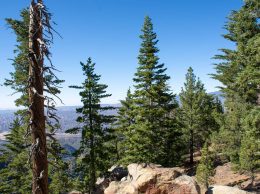Letter: Local governments should be commended for efforts to mitigate fracking threats
Dear Editor:
The opening sentences in the Business Times’ March 1 editorial on the oil recovery technique known as hydraulic fracturing, or “fracking” (“Let California set the stage on fracking rules”) would be more appropriately posed as questions: Fracking here? Fracking there? Fracking everywhere?
In California, no one but the oil industry knows the answers to these questions, because the state does not require operators to disclose where and when they frack, or the chemicals they use.
Even the state’s primary oil regulator — the Division of Oil, Gas & Geothermal Resources, or DOGGR — recently stated that it was “unable to identify where and how often” fracking is done in California.
Although DOGGR has finally proposed rules governing the practice, those rules are flawed and still months away from adoption. California’s cluelessness is compounded at the federal level, where Congress has provided oil producers with exemptions or loopholes from nearly every major environmental law.
With oil activity on the upswing and continued predictions of a massive oil boom driven by fracking the Monterey shale underlying much of central and southern California, local governments have understandably begun looking at ways to fill these gaps in state and federal law.
The state’s constitution wisely vests cities and counties with the power to enact regulations for the protection of public health, safety, and the local environment. Local governments can tailor rules to local needs, and are typically well situated to provide an accessible process for residents and businesses.
Indeed, even after DOGGR finishes its rulemaking, many cities and counties will continue overseeing the surface impacts of oil production as they have for decades.
In December 2011, Santa Barbara County became the state’s first local government to require public notification and environmental analysis prior to fracking, but only after Venoco fracked wells near Los Alamos without first telling neighboring landowners or county regulators (notably, neither the Los Alamos fracks nor any other Santa Barbara county fracks have been reported on the voluntary industry disclosure site www.fracfocus.org).
Supervisor Doreen Farr initiated the county process after her constituents, including farmers and other property owners, expressed unease that fracking “could happen without warning” and “wanted a thorough and transparent public process prior to approval of any fracking operation.” Similarly, the Ventura County Board of Supervisors recently initiated a study on fracking within its borders, after they were unable to answer constituents’ questions about where the practice was being utilized.
On the same day, the Ventura supervisors requested that the state legislature adopt urgency legislation to require the prior disclosure of fracking locations and chemicals, based on their concerns over potable water usage, disposal of fracking wastewater and risks to drinking water and agricultural aquifers from fracking chemicals.
Although some proponents argue that any regulations are unnecessary because fracking has been safely used in California for “decades,” today’s fracking is different because it includes drilling to deeper depths, utilizes new directional drilling techniques, demands greater quantities of water and relies upon a new generation of ‘fracking fluids’ containing hazardous and carcinogenic chemical constituents.
Both our local municipalities and local legislators should be commended rather than criticized for their efforts to address the threats that the Monterey shale frack rush poses to our water, air, wildlife and communities, as well as critical regional economic drivers such as agriculture and tourism.
— Brian Segee
Staff attorney,
Environmental Defense Center











